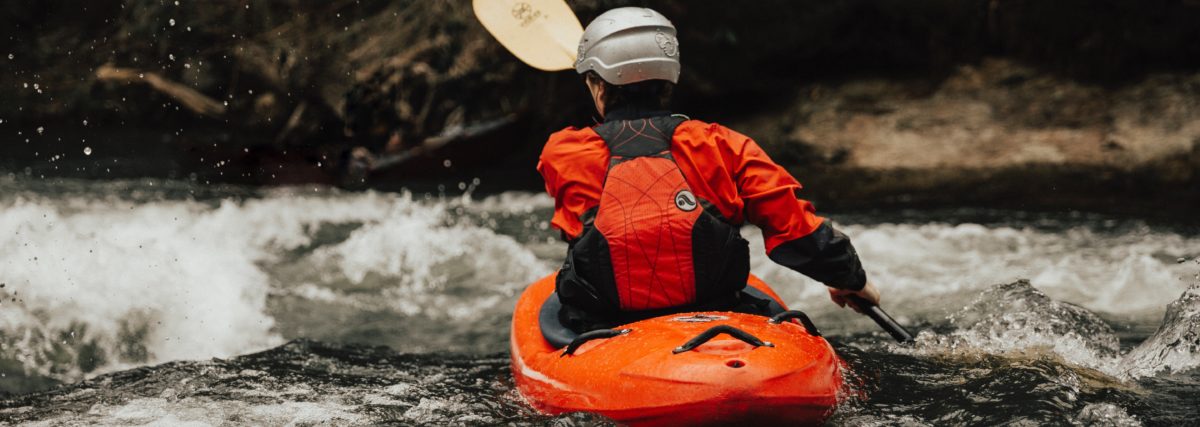If you’re a kayaker, you’ve likely heard of sea kayaks and lake kayaks, but you might not know the differences between them. I love kayaking in the lake and also in the ocean. While sea kayaking is a bit terrifying, it has its own thrills and beauty to enjoy, so I go sea kayaking a couple times a year with a couple of my buddies.
Now, choosing the right type of kayak can make all the difference in the world, especially when it comes to safety and enjoyment.
Sea Kayaks vs Lake Kayaks: The BreakDown!
So, what’s the difference between a sea kayak and a lake kayak? Let’s dive in!
#1. Design Differences
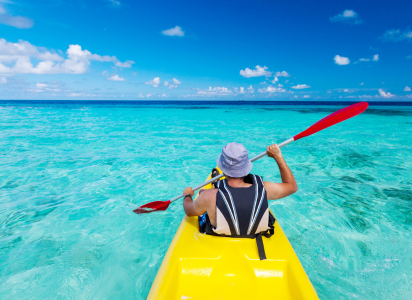
Sea kayaks are designed for open water conditions, such as ocean waves and currents. They are longer and narrower than lake kayaks, which makes them faster and more streamlined. They have a lower center of gravity, which means they are more stable in the water.
They have a more pronounced rocker, which helps them cut through waves and also typically have a rudder or skeg to help with steering in rough water conditions. Sea kayaks are typically made of more durable materials, such as fiberglass or carbon fiber.
On the other hand, lake kayaks are designed for calmer waters, such as lakes or slow-moving rivers. They are shorter and wider than sea kayaks, which makes them more stable and easier to maneuver in tight spaces.
They usually have a larger cockpit, making them more comfortable for those who are new to kayaking or who want to relax and enjoy the scenery.
Lake kayaks do not typically have a rudder or skeg, as they are not necessary in calm water conditions. They are usually made of less durable materials, such as plastic, which makes them more affordable.
#2. Storage Space
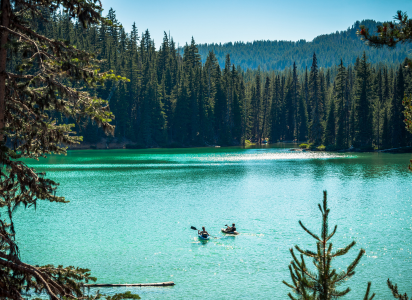
In terms of storage space, sea kayaks generally offer more options than their lake counterparts.
Given their design to handle long-distance excursions and overnight trips, sea kayaks often feature built-in hatches for the storage of gear and supplies. These hatches are sealed to keep water from getting into the stored items.
This makes sea kayaks a suitable option for multi-day adventures where extra clothing, camping gear, and food are required.
Lake kayaks, on the other hand, are usually equipped with less storage space as they are primarily designed for short, leisurely trips. They often have open storage areas with bungee cord webbing to hold items in place.
While this provides easy access to belongings, the items stored are exposed to the elements and can get wet. More advanced models of lake kayaks might have a sealed hatch, but these are less common. However, the limited storage shouldn’t be a downside if you’re planning a day trip or a few hours of paddling on the lake.
#3. Length and Weight
When it comes to length and weight, there are also key differences between sea kayaks and lake kayaks. Sea kayaks are typically longer, often ranging from 12 to 18 feet in length, which makes them faster and capable of covering larger distances.
However, this longer length can make them more challenging to transport and store. They are also usually heavier due to their durable construction materials, which can make them more difficult to carry and transport out of the water.
Lake kayaks, conversely, are shorter and more lightweight. They usually range from 9 to 12 feet in length, which makes them easier to maneuver, especially for beginners.
Their compact size also makes them easier to transport and store. Being typically made of lighter plastic, lake kayaks are also easier to carry from your vehicle to the water’s edge. Despite their light weight, they are sturdy enough for calm lake or slow-moving river paddling.
#4. Hull Design
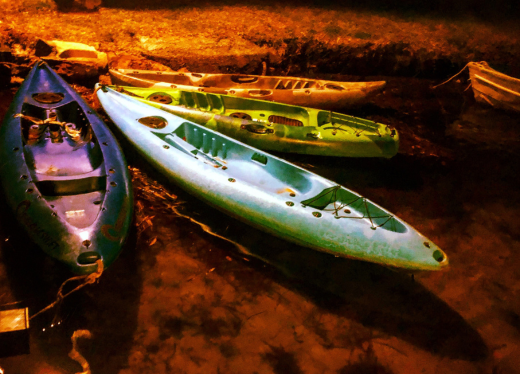
Hull design is another major distinguishing factor between sea kayaks and lake kayaks.
Sea kayaks usually have a v-shaped or rounded hull. The v-shaped hull allows for better tracking, which is the kayak’s ability to move straight, and also gives it more speed. The rounded hull, on the other hand, is designed to aid in the boat’s secondary stability – the stability felt when the kayak is tilted on its side, which is a common position for a kayak to be in when navigating waves in the open sea.
Lake kayaks, conversely, often feature a flat or pontoon hull design. A flat hull design gives the kayak excellent primary stability – the stability felt when the kayak is flat on the water. This is perfect for relaxing and fishing on calm waters, making it a popular choice for lake kayaking.
Pontoon hulls, being ultra-stable, are great for beginners as they provide a large degree of primary stability and are hard to tip over. However, these designs tend to be slower and offer less performance compared to their sea kayak counterparts.
Can a sea kayak be used in a lake?

While a sea kayak is primarily designed for open water conditions, it can certainly be used in a lake. However, its long length may make it less maneuverable than a shorter lake kayak, especially in tight spots.
Also note that the v-shaped or rounded hull may feel less stable when the kayak is flat on the water. I do not recommend you use a sea kayak in a lake.
Is a sea kayak more stable than a lake kayak?
The stability of a kayak can be subjective and depends largely on the conditions and the skills of the paddler.
Lake kayaks are designed with a wider, flatter hull, which provides greater primary stability – the stability felt when the kayak is flat on the water. This makes them feel more stable when on calm, flat water such as a lake, but less stable in rough, choppy conditions.
Sea kayaks comparatively have a narrower, v-shaped or rounded hull, which provides greater secondary stability – the stability felt when the kayak is tilted on its side.
This means they feel more stable in rough, open water conditions and less stable when flat on the water. However, an experienced paddler may feel stable in a sea kayak on a lake, as they are able to handle the kayak’s movement and balance effectively.
Therefore, it’s not accurate to say that one type of kayak is inherently more stable than the other – it really depends on the conditions and the paddler’s experience and skill level.
Are sea kayaks more expensive than lake kayaks?
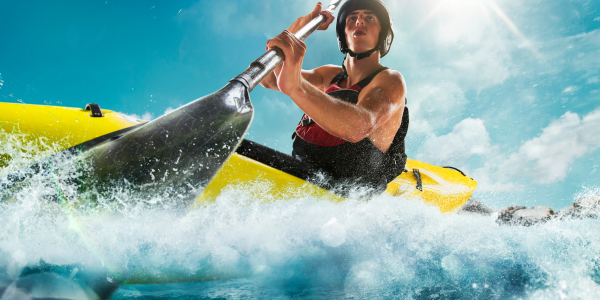
Sea kayaks can indeed be more expensive than lake kayaks, mostly due to the materials used, their design complexity, and additional features.
As sea kayaks are designed for rougher and more open waters, they are typically made with more durable (and often pricier) materials to withstand these conditions.
Moreover, their designs are usually more complex, featuring added characteristics such as bulkheads for buoyancy, rudders or skegs for navigation, and hatches for storage – all of which can add to the cost.
When it comes to lake kayaks, they are generally simpler in design and use less expensive materials, as they are intended for calmer, protected waters.
However, prices can vary significantly based on brand, model, and included features. It’s always recommended to consider your individual needs, budget, and paddling conditions when choosing a kayak.
So Which Ones Is For You: Sea Kayaks or Lake Kayaks?
In summary, sea kayaks and lake kayaks are different in several ways, including size, shape, and materials. Sea kayaks are built for open water conditions, while lake kayaks are more suited for calm lakes and rivers.
It is important to choose the right type of kayak for the conditions you’ll be facing in order to stay safe and have the most enjoyable experience possible. Trust me, I learned this the hard way and you don’t have to!
